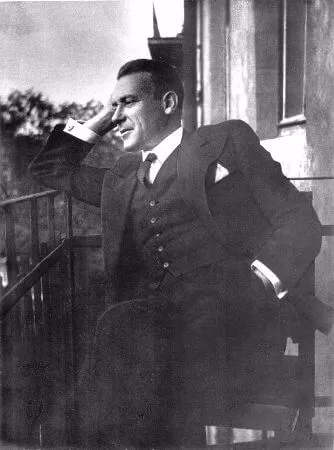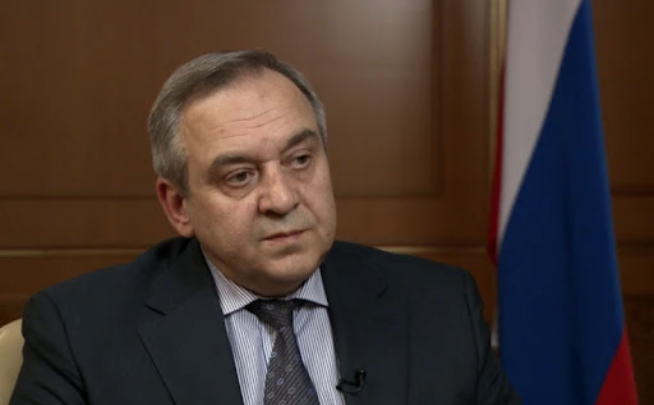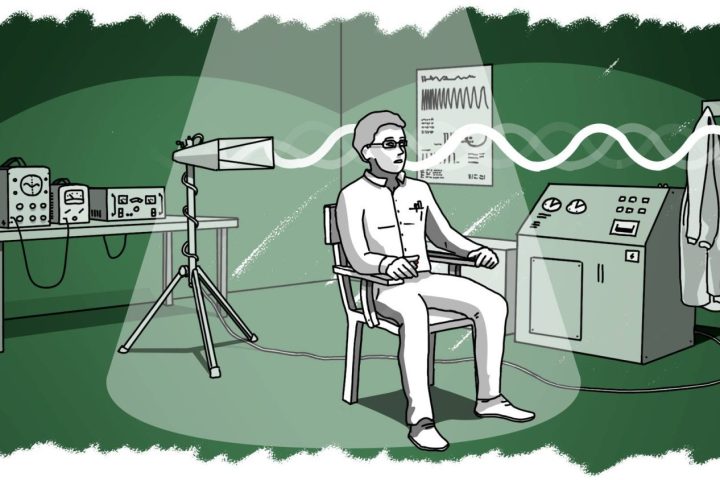Mikhail Bulgakov was a Russian writer, medical doctor, and playwright active in the first half of the 20th century. He is best known for his novel “The Master and Margarita”, published posthumously, which has been called one of the masterpieces of the 20th century. He is also known for his novel “The White Guard”; his plays “Ivan Vasilievich”, “Flight” (also called The Run), and “The Days of the Turbins”; and other works of the 1920s and 1930s. He wrote mostly about the horrors of the Russian Civil War and about the fate of Russian intellectuals and officers of the Tsarist Army caught up in revolution and Civil War. Some of his works were banned by the Soviet government, and personally by Joseph Stalin, after it was decided by them that they “glorified emigration and White generals”.

Mikhail Afansyevich Bulgakov, known for his books The Master and Margarita and The Dog’s Heart, was born on May 15, 1891 in Kiev, today the capital of Ukraine. He was the son of a theology professor father.
Bulgakov graduated from medical school in 1916, during the First World War. At that time, medical graduates were doing their military service as doctors in small and ill-equipped hospitals in remote parts of the country. Bulgakov went to the village of Nikolskoye in the Smolensk region and worked as a general practitioner in the hospital there for eighteen months.
- read more:
- The Life and Books of Fernando Pessoa
- The Crown’s Sixth Season: A Rollercoaster of Emotions and Nostalgia
In his book, A Young Village Physician, he narrates his memories of that period. Some of these stories were published in magazines between 1925 and 1927. The fantastic elements and surrealist narrative that marked Bulgakov’s literature are not seen in these stories. This story universe, which he constructed based on his experiences, observations and knowledge, reveals the naked and frightening reality of life before our eyes.

“Doctor… sir… sir… my only daughter… my darling…” Suddenly he raised his voice so loudly that the lampshade trembled. “Oh, doctor… oh…” He was very upset, he was flailing his arms and he was on the floor again, as if he wanted to smash the floorboards. “What is this happening to me? What kind of punishment is this? What sin have I committed?”

Unlike Anton Chekhov, who regarded medicine as his lawful wife and literature as his mistress, Bulgakov has a different perspective. He does not appreciate the practice of medicine. While Chekhov, in his stories centered around the medical profession, portrays doctor characters who approach their patients with kindness and humanity, trying to heal them, Bulgakov emphasizes the fear of the doctor rather than the patients. He remains indifferent to Chekhov, unaffected by him, and instead, he admires Gogol. Considering himself among the writers influenced by Gogol’s “The Nose” rather than “The Overcoat,” Bulgakov’s young doctor characters in “A Young Doctor’s Notebook” express regret for their medical education. They fear causing death while attempting to bring someone back to life. Bulgakov practices medicine for four years, abandoning the profession entirely in 1920 to dedicate himself fully to literature.
Mikhail Bulgakov’s semi-autobiographical first novel, “The White Guard,” published in 1925, narrates the story of the Turbin family living in the capital city of Ukraine, Kiev, finding themselves in the midst of chaotic civil war. In the backdrop of personal losses experienced by the Turbins and the surrounding social chaos, Bulgakov paints a magnificent portrait of existential crises arising from the uncertainties in the revolution and in social, moral, and political life. He adapts this novel, similar to Tolstoy’s “War and Peace,” into a play titled “Days of the Turbins.” Despite facing significant backlash from Soviet official circles for not featuring a communist hero, it is said that Stalin himself highly appreciated the novel, watching the play “Days of the Turbins” fifteen times. Despite Stalin’s intriguing interest, Bulgakov constantly faces criticism from the government throughout his life, enduring continuous censorship and being tormented at the Moscow Art Theatre, where he struggles to stage his plays.
Although The Deadly Eggs was written in 1924, the year Stalin came to power, this science fiction set in 1928 is a brilliant critique of the system that points to the consequences of the abuse of power and knowledge. In the turbulent period following the 1917 Russian Revolution, as a new Russian reality emerges, Persikov, a professor of zoology, continues his scientific work. During these studies, he accidentally discovers a new red ray that increases the reproductive rate of living organisms and makes them gigantic. When an epidemic breaks out in the Soviet Republics, decimating all the chickens, Persikov’s untested discovery is seen as the cure for the problem. After all, the guiding principle of the Stalin era was to outpace enemies and rivals with advances in science.
“The frog slowly moved his head and the words “You’re scum, nothing else…” appeared clearly in his eyes, where the light had gone out.”

Although he wrote The Dog’s Heart in 1925, it was not published in the West until 1968 and in the USSR until 1987. A world-famous Moscow surgeon takes a stray dog into his home and transplants a dead man’s testicles and part of his brain into the dog. The operation has unexpected consequences. A dangerous man-animal is created and the professor’s respectable life turns into a nightmare. In The Dog’s Heart, he allegorically opposes the new regime that tries to put everything into a system, based on a professor working on dogs. The book can be read as an absurd and comic story or as a satire on the Russian Revolution. The novel, which can be compared to the story of Frankenstein and the works of Kafka, displays a genius for surrealist humor.
“You think I recognize him by his coat, don’t you? Not at all. Today even the laborer wears a coat. Although the collar is a bit different, but it may look like that from a distance. But if you pay attention to his eyes, you can never go wrong. The eyes are the most important. They are like a barometer. From their eyes, you can immediately tell that someone with a calloused heart will bury the pointy toe of his shoe in your ribs for no apparent reason. It is also possible to spot cowards. Biting them is a pleasure in itself. So you’re scared, if you’re a coward, then take it… Growl… Growl… Ouaou!… Ouaoou!” (The Dog’s Heart,)

In 1925, he met Lyubov Belozerskaya at a literary evening organized in honor of Tolstoy, and they were soon married. Belozerskaya’s well-rounded education, her command of the French language, her reading of many sources, her literary taste and artistic spirit also influenced Mikhail Bulgakov’s literature. Lyubov Belozerskaya is the person to whom he dedicated his works The White Guard, The Dog’s Heart, Moliere Efendi.
In 1929, the 3.5-year deep crisis period of the writer’s life began. The publication ban began to cover all his works. After this year, neither a book could be published nor a play staged. He stopped writing for a while. He wanted to go abroad, even wrote a letter to Stalin, but he was not allowed. He was given a backstage job at the Moscow Art Theater. Moreover, he is hopelessly in love with Elena Sergeevna, who is married like him. In 1931, after a mutual drawing of arms with Elena’s husband Silovsky, Elena and Bulgakov separated, deciding never to meet again.
In A Theatrical Novel (Black Snow), which he began writing in 1936, Mikhail Bulgakov draws on his experiences as a playwright and presents the behind-the-scenes of the theater world of the period. Although Mikhail Bulgakov was originally known as a novelist, his work during his lifetime was directed towards theater. However, the plays he wrote from 1920 onwards were censored and not staged. Although he called his novel Theatrical Novel and Notes of a Deceased, it was published under the title A Theatrical Novel (Black Snow).
In the work, Sergey Leontyevich Maksudov suddenly finds himself in the unthinkable maelstrom of theatricality when his play is almost randomly chosen to be staged at the legendary Independent Theater. The two directors of the Independent Theater vie for control of the production, while star actresses make fanfare after fanfare. With each rehearsal, the chances of the play being staged seem to diminish a little more. Maksudov is in the middle of a chaos he does not know how to get out of. A Theatrical Novel (Tha Black Snow) tells the story of a broadcasting environment around ignorance, bad taste and rivalries, moving from local to universal.
“I was walking alone on the main street of the capital in my new gray suit and a very elegant coat, going somewhere I had never been before. The reason for my visit was the letter I received unexpectedly, lying in my pocket. It was as follows: “Sergey Leontievich, whom I respect very deeply! I have not met you very well, and I would like to chat with you about a confidential matter that may be of great interest to you. If you have time, I would be happy to see you on Wednesday at 4 p.m. in the building of the Training Stage of the Independent Theater. Greetings, K. İlçin” (A Theatrical Novel (The Black Snow))

Written in 1930, his masterpiece The Master and Margarita was completed in 1938, after eighteen years of writing numerous plays and short stories. Censored when it was first published, it is a novel with a witty sarcasm and a philosophical depth, examining the universal problems of good and evil. The book, which has an interesting plot, tells the story of two different times. In the Moscow of the 30s, two writers are discussing whether Jesus is really alive when a stranger with the ability to read the future approaches them, telling them that one of them will die soon and the other will go mad. This stranger, named Woland, is none other than the devil who has come to visit Soviet society. Indeed, one of the writers dies shortly afterwards. The other writer goes mad and is locked up in an asylum, where he meets the Master. He listens to the Master’s novel about Pontius Pilate, the governor who played a major role in the crucifixion of Jesus, and his love for Margarita. Considered one of the 20th century’s best novels, it is fantastically plotted, full of sharp satirical humor, often alternating between cynical scenes and powerful, emotional and poignant moments.
“We don’t really believe in God,” Berlioz said, smiling slightly at the tourist’s concern. “But this is something we can talk about with great ease.” The stranger leaned back and exclaimed in a voice almost shrill with curiosity: “So you are godless?” “Yes,” said Berlioz, smiling. “We are godless people.”
“This imported tick sticks and sticks,” Biezdomni thought angrily. “But it’s wonderful!” exclaimed the astonished foreigner, and then he turned his head endlessly from side to side to look at the two men of letters.”
Until September 1932, he and Elena did not meet. When they met, Bulgakov’s first words were “I cannot live without you”. On October 4, 1932, they got married.

Bulgakov’s health is gradually deteriorating, and he will spend this period struggling to finish the novel Master and Margarita with the support of his wife. Elena writes in her diary: “He added to the first chapter and asked me to read the novel to him again. I had started to read the part about Berlioz’s funeral when he said, “Okay… That’s enough… I think” and he never asked me to read it again.”
It is said that Master and Margarita is a work that centers on Stalin’s direct intervention in Bulgakov’s life, while according to another reading, the three protagonists Woland, Master and Margarita are the direct counterparts of the personalities of Stalin, Bulgakov and Elena respectively.

On March 10, 1940, he died of kidney failure at the age of 49. The Master and Margarita was only published in the Moscow Magazine in 1966-67, years after his death, thanks to the efforts of his wife. It was not until 1973 that it was published in book form.





